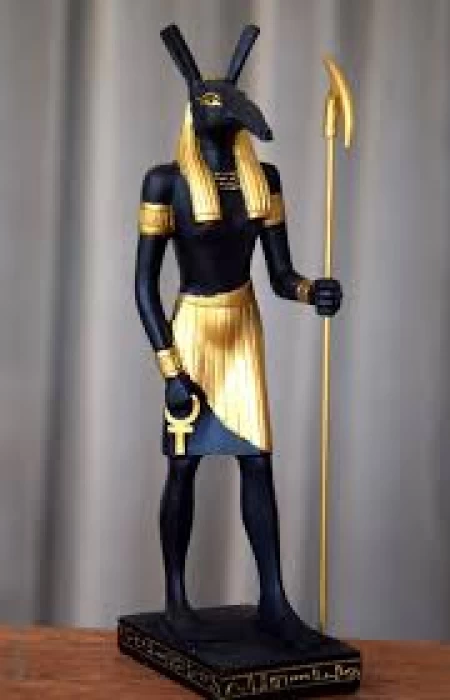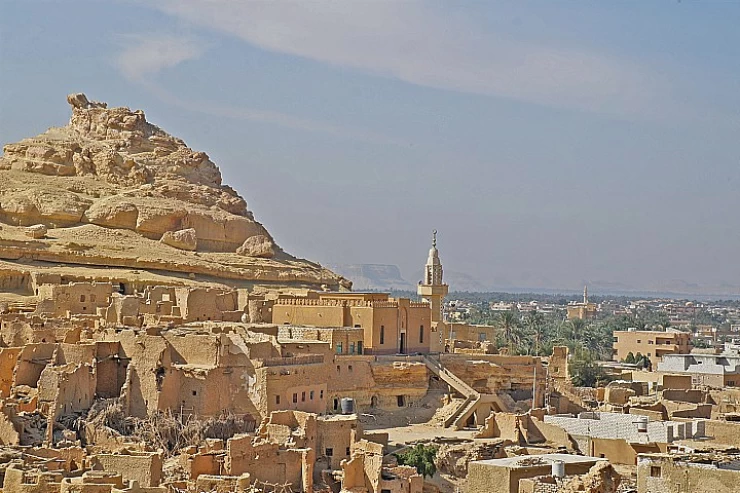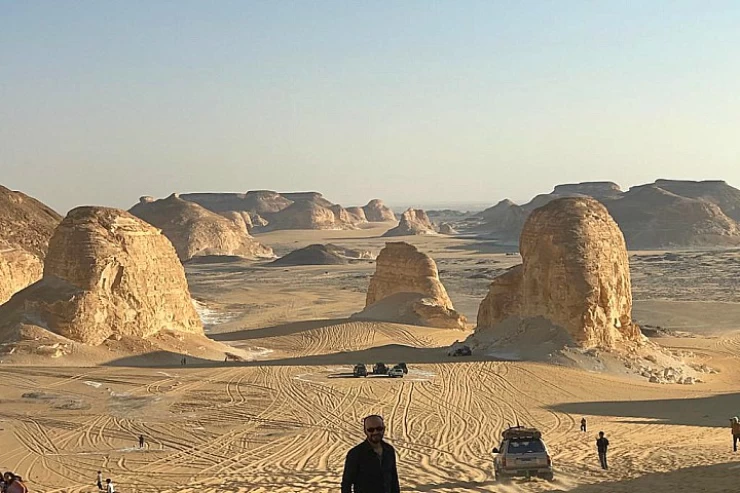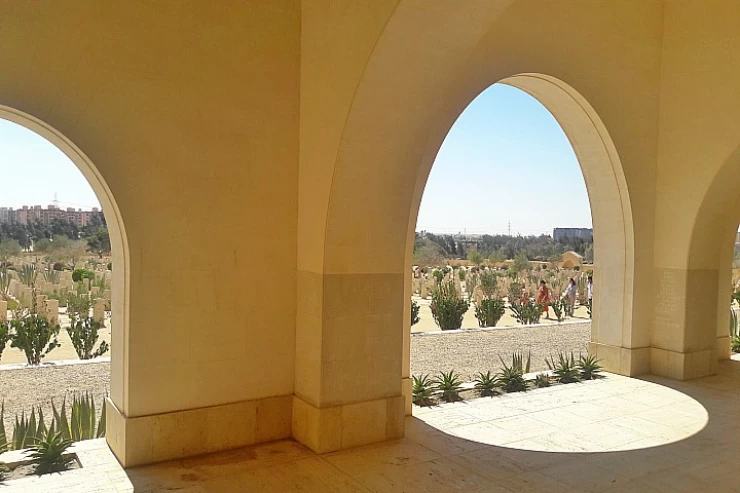
Deus Seth | Deus Egípcio da Guerra | Deus do Deserto no Egipto Mitologia
Deus Seth
De acordo com uma crença antiga, Deus Seth era filho de Geb e Nut, a sua esposa era a irmã Nephthys.
No entanto, nenhuma das uniões com as muitas mulheres possuídas foi útil e isto esteve provavelmente relacionado com a esterilidade dos desertos sobre os quais o poder de Seth se estendeu.
Mitologia do Antigo Egipto
O corpo deste animal tinha cachos de pêlo que se formavam como flechas invertidas. Nas suas mãos havia um longo cajado que tinha a cabeça de um animal de Seth em cima e que era bifurcado em baixo. Seth retratava segurando um sinal de ankh (chave da vida) numa mão e um cajado noutra. Ele está associado ao porco, ao burro e ao crocodilo. Também foi associado a algumas criaturas venenosas como escorpiões, cobras, e por vezes como um hipopótamo.
Seth e Horus eram as duas divindades que simbolizavam o Egipto nas duas componentes étnicas. Todas as populações asiáticas que se estabeleceram no Egipto, começando pelos Hyksos, tinham a sua principal divindade em Seth.
Originalmente Seth era adorado como deus local no quinto e décimo primeiro distritos do Alto Egipto; nos tempos pré-históricos, ele era o deus de todo o Alto Egipto. O culto de Seth foi introduzido sob o reinado do rei Peribsen na 2ª Dinastia, na região do Delta Oriental, este rei foi mesmo chamado Seth-Peribsen. Começando na era Heliopolitana, os reis que governaram o Egipto de norte a sul eram "Servos de Hórus", portanto inimigos de Seth.
Ele era também conhecido pelos egípcios como o deus da guerra e das tempestades e estava ligado ao planeta mercúrio e à cor vermelha. O povo odiava assim pessoas de pele vermelha e até matava animais com pele vermelha porque pensavam estar relacionados com Seth, como irmão mais novo de Osíris, ficou com ciúmes dele e assassinou-o. Após matar Osíris, Seth desmembrou o corpo de Osíris, e ele espalhou os pedaços do seu corpo sobre a face da terra.
Viagem ao Egipto para visitar os templos e pirâmides egípcios para aprender mais sobre a mitologia e centenas de deuses adorados pelos Faraós, que eram muito semelhantes aos humanos que amavam e odiavam, sentiram ciúmes e lutaram e morreram durante um mito espantoso cheio de alegria, acção e acontecimentos dramáticos que inspiraram os realizadores e produtores de cinema modernos a criar filmes mundialmente famosos sobre a grandeza dos Faraós e dos Deuses que adoravam. Passe alguns dias para visitar Abydos, Giza, Luxor, Assuão para ver os túmulos dos Faraós adornados com cenas muito claras, detalhadas e belamente pintadas das várias divindades do antigo Egipto, bem como muitos outros locais, cidades, aventuras, e coisas para fazer no Cairo, pode tentar reservar um dos nossos pacotes de viagens ao Egipto e muitos grupos privados de excursões guiadas de um dia no Cairo a partir do aeroporto e de um dia no Egipto para explorar a capital do Egipto, Cairo pode verificar muitos dos itinerários do Egipto ou fazer uma das nossas excursões completas do Dia do Cairo, como por exemplo:
Set was the ancient Egyptian god of the desert and storms, and in later mythology, he was also the god of darkness and chaos. Set is depicted as a usurper who killed and mutilated his brother Osiris.
Seth is known for the rivalry he had against his brother Osiris. As the myth goes, Seth became jealous of the rule of Osiris over Egypt and planned to dethrone him. He deceived Osiris and trapped him in a chest, throwing him into the Nile. Afterward, he mutilated the body of Osiris into small bits and scattered it all over Egypt. This is what led to the continuous enmity between Seth and Horus, the son of Osiris.
The myth of the battle between Seth and Horus is perhaps the most essential myth of Egyptian mythology. The deities had several savage competitions among themselves to enjoy the privilege of ruling Egypt. Finally, Horus emerged as the victor by showing order triumphing over chaos, but not fully, because he continued to rule over the deserts and receive shrines heard by the desert warriors and wayfarers.
Though a god of chaos, Seth was also venerated in some places in Egypt. He was particularly venerated in the northeastern Delta region, and one of his principal cult cities was Avaris. The Hyksos, a foreign dynasty that ruled Egypt during the Second Intermediate Period (c. 1650-1550 BCE), identified Seth with their storm gods and made him a protective deity.
When pharaohs were honoring Seth, he was mostly associated with the military might of the country, such as in the case of Seti I and Ramses II of the Nineteenth Dynasty, as it was with regard to the use of Seth as a safeguard against enemies. Militaristic strength made Seth another important figure during the reign of the Egyptian rulers, giving those with divine protection legitimacy.
Set» is one of the ancient Egyptian gods. He is the god of storms and violence and is called «Set Nabti», meaning «Set, who belongs to the city of Nobet». He is the god of evil in ancient Egypt, where he killed his brother. However, Set played a good role, as he was known as the protector and the destroyer as well, as it is a complex combination. With Horus, he defends the king's name in the fern.
Egotistical and destructive yet completely necessary, Seth had an essential role in Egyptian mythology; like disorder, he was a necessary part of the cosmic balance, an order against which he is the embodiment of that struggle. Seth in different inter-
Seth (Set, Sutekh, or Setesh) is Egyptian mythology's most complicated and controversial deity. He had been a god of war, chaos, and storms, and of the desert, a powerful yet unpredictable force. Though he bore negative connotations, Seth was a vital and protective power in the universe's balance and was revered in some parts of ancient Egypt.
From the earliest parts of Egyptian mythology, Seth is usually derived. He was often portrayed as a most mysterious creature called the Seth animal, an archaic deity with an elongated curved snout, square ears, and a forked tail. Some interpretations have viewed this hybrid form as a reflection of his chaotic nature, such that he could not easily identify himself or the animal kingdom of the real world.
In the Egyptian arts, Seth was also shown as a strong warrior with huge scepters signifying further arguments over Africa and storms. His reddish skin was sometimes interpreted as suited to the dry and unfruitful lands, such as the deserts of Egypt, in contrast to the most fertile black soils of Egypt's Nile Valley.
According to an ancient belief, God Seth was the son of Geb and Nut, his wife was the sister of Nephthys.
However, none of the unions with the many possessed women has been useful and this was probably related to the sterility of the deserts over which Seth's power extended.
The body of this animal had fur bunches that were formed like inverted arrows. In his hands was a long staff that had the head of a Seth animal on top and was forked at the bottom. Seth is depicted holding an ankh sign (key of life) in one hand and a staff in another. He is associated with the pig, the donkey, and the crocodile. He was also associated with some poisonous creatures like scorpions, and snakes, and sometimes as a hippopotamus.
Seth and Horus were the two deities that symbolized Egypt in the two ethnic components. All the Asian populations that settled in Egypt, starting with the Hyksos, had their main divinity in Seth.
Originally Seth was worshiped as a local god in the fifth and eleventh districts of Upper Egypt; in prehistoric times, he was the god of all of Upper Egypt. The cult of Seth was introduced under the reign of King Peribsen in the 2nd Dynasty, in the eastern Delta region, this king was even called Seth-Peribsen. Beginning in the Heliopolitan era, the kings who ruled Egypt from north to south were "Servants of Horus", therefore enemies of Seth.
He was also known by Egyptians as the god of war and storms and was linked with the planet Mercury and the color red. The people thus hated people with red skin and even killed animals having red fur because they thought they were related to Seth, Osiris’s younger brother, who grew jealous of him and murdered him. After killing Osiris, Seth dismembered Osiris’s body, and he scattered the pieces of his body over the face of the earth.


















